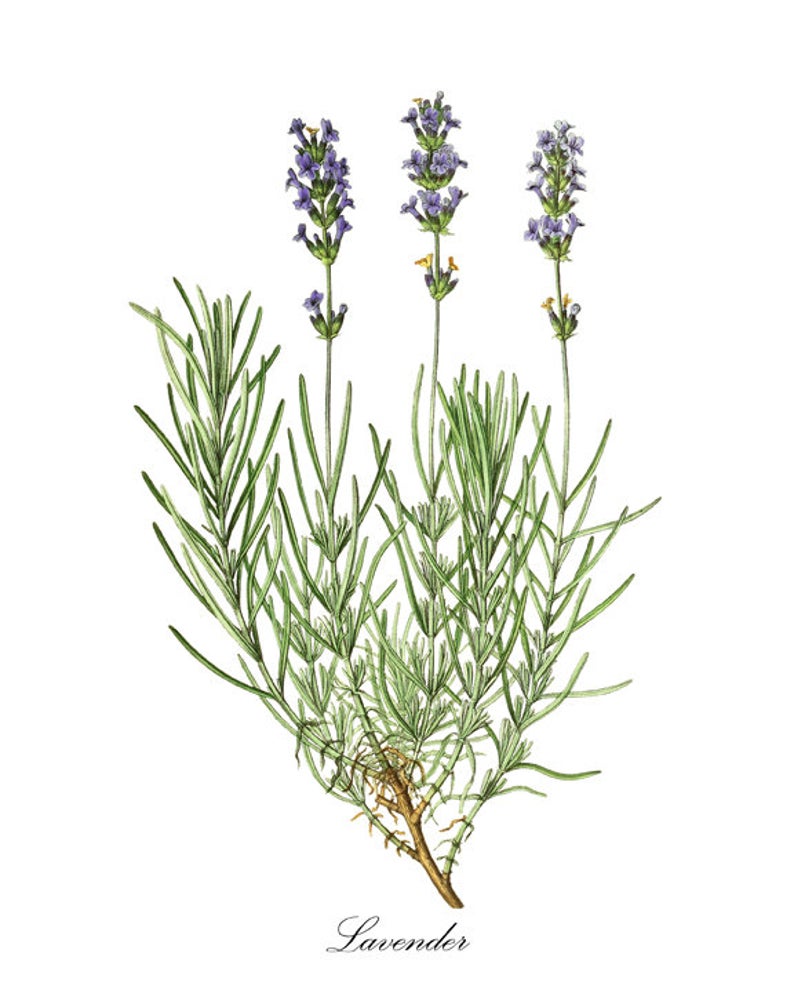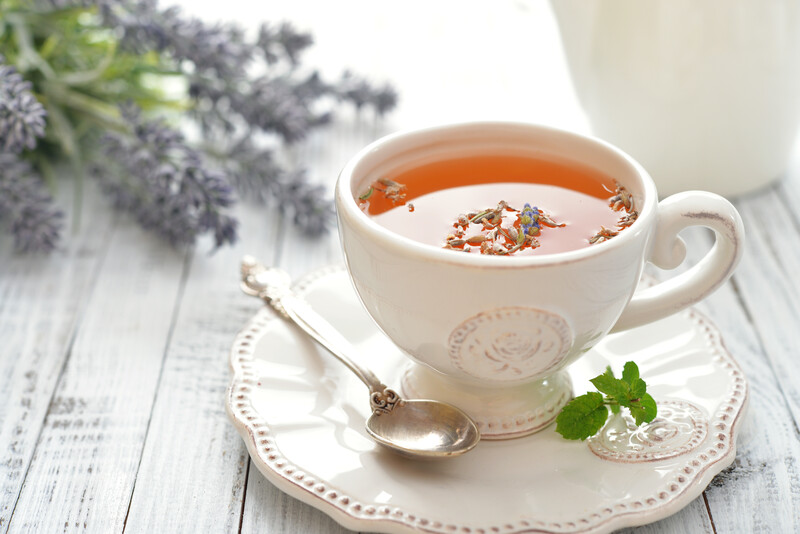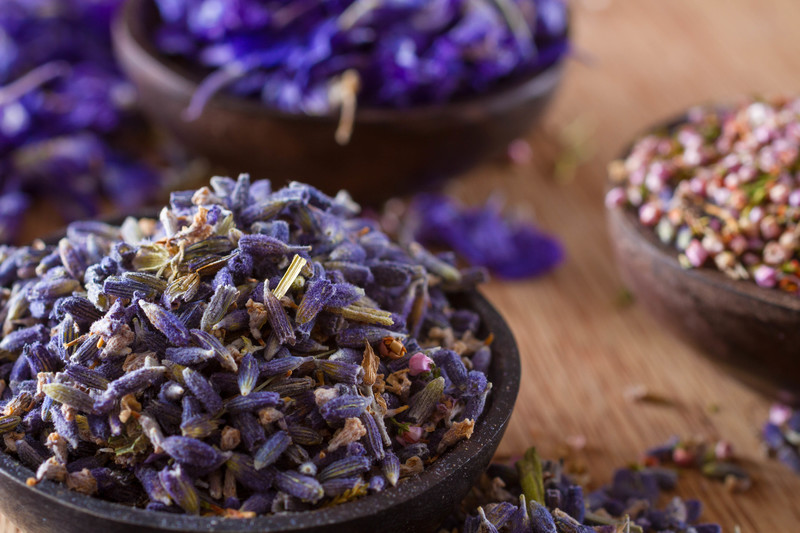Lavender is a flowering plant in the mint family that’s easily identified by its sweet floral scent. It’s believed to be native to the Mediterranean, the Middle East, and India, with a history dating as far back as 2,500 years.
In ancient times, lavender was used as a holy herb. Additionally, it was often used to freshen up and give a light scent to a variety of personal items, such as clothes and hair.
Botanical Name – Lavandula spp

Family – LAMIACEAE (Mint)
Parts Used – Flowers, Leaves, Stems
Energetics – Warming
Taste – Pungent, Bitter
Plant Properties – Aromatic, Antimicrobial, Analgesic, Relaxing Nervine, Carminative, Cholagogue
Plant Uses – Bacterial and Fungal Infections, Tension, Poor Sleep, Anxiety, Pains, Wounds, Burns, Depression, Headaches, Dyspepsia, Bug Bites, Insect Repellant
Plant Preparation – Tea, Tincture, Essential Oil, Culinary
Today, lavender is more than just a fragrant plant. As it turns out, this herb is also commonly used for medicinal and therapeutic benefits. So if you’re dealing with a few medical issues of your own, and you don’t want to risk the unpleasant side effects that come with many over-the-counter and prescription medicines, here’s a look at the potential health perks of using lavender.
Benefits, Recipe & Side Effects
Lavender is one of the most beautiful plants in the world. The most beloved form of use is lavender tea known for its calming effects, which makes it an ideal bedtime tea.
The best benefits of lavender tea include relaxing the body, reducing muscle spasms, promoting healthy digestion, and aiding sleep. It also helps eliminate inflammation, balances mood, heals the skin, and soothes chronic pain.
Lavender tea comes from the lavender buds of the flowering plant, the small purple bundles. Scientifically found in the genus Lavandula, lavender is native to the land surrounding the Mediterranean Sea and Southern Europe, ranging from the Middle East to Asian countries. It comprises more than 30 species, dozens of subspecies, and plenty of hybrids and cultivars.
It has an effective concentration of calcium, iron, vitamin A, and phenolic compounds, and potent terpenes, such as linalool. These nutrients can have several notable effects on human health.
When you drink lavender tea, it may provide relief from insomnia, high anxiety, gastrointestinal upset, skin irritation, and headaches. Regardless of what ails you, the benefits of lavender tea will likely be able to help!

Lavender Tea Recipe
Making lavender tea at home is a simple process, involving only fresh lavender buds and water, although some people enjoy blending the tea with honey, chamomile, or even other herbal teas. You can add this tea to a warm tub of water for a relaxing bath.
Ingredients
- 1-2 tsp dried lavender buds, or 4 tsp of fresh lavender buds
- 2 cups of water (filtered)
- 1 tsp of honey (to taste, if desired)
Instructions
- To make lavender tea, add the fresh or dried lavender buds to a teacup.
- Bring the water up to a boil, then remove from heat for 1 minute.
- Pour the water over the lavender buds and allow them to steep for 5 minutes. Place a plate over the top to keep the steam inside the mug, further infusing the tea.
- Remove the plate, add honey if you want to sweeten the flavor, and enjoy! No need to strain the lavender buds out; most will have sunk to the bottom of the cup.
You can use fresh lavender buds or dried ones, depending on your availability. If you have fresh lavender and wish to dry some for the future, it is best to harvest them before they fully bloom, and cut the flowering stalks right above the leaves. Bind them into bundles and hang them upside-down in a dark, cool, and dry place. The drying process should take between 2 and 4 weeks. Then, simply brush the stalks and the lavender buds should fall off easily, to be stored and used later for tea.
Caution: The main side effects of lavender tea include skin irritation, nausea, vomiting when consumed in excess, but there are other possible interactions and situations to be wary of lavender tea. Lavender tea may cause headache, constipation, and also appetite change if not taken in moderation. Some of the side effects can be quite serious when the lavender is ingested in a toxic amount.



I see more and more people growing this right on their patio. My friend rubs it on my dog when we visit her. She says it makes him smell better! I want to try and make the oil! Wish me luck! 🙂
LikeLike
Lavender is on of my favorites. Good luck!
LikeLike
I love lavender.
LikeLike
Yes Lavender is great!
LikeLike
Reblogged this on cancer killing recipe.
LikeLike